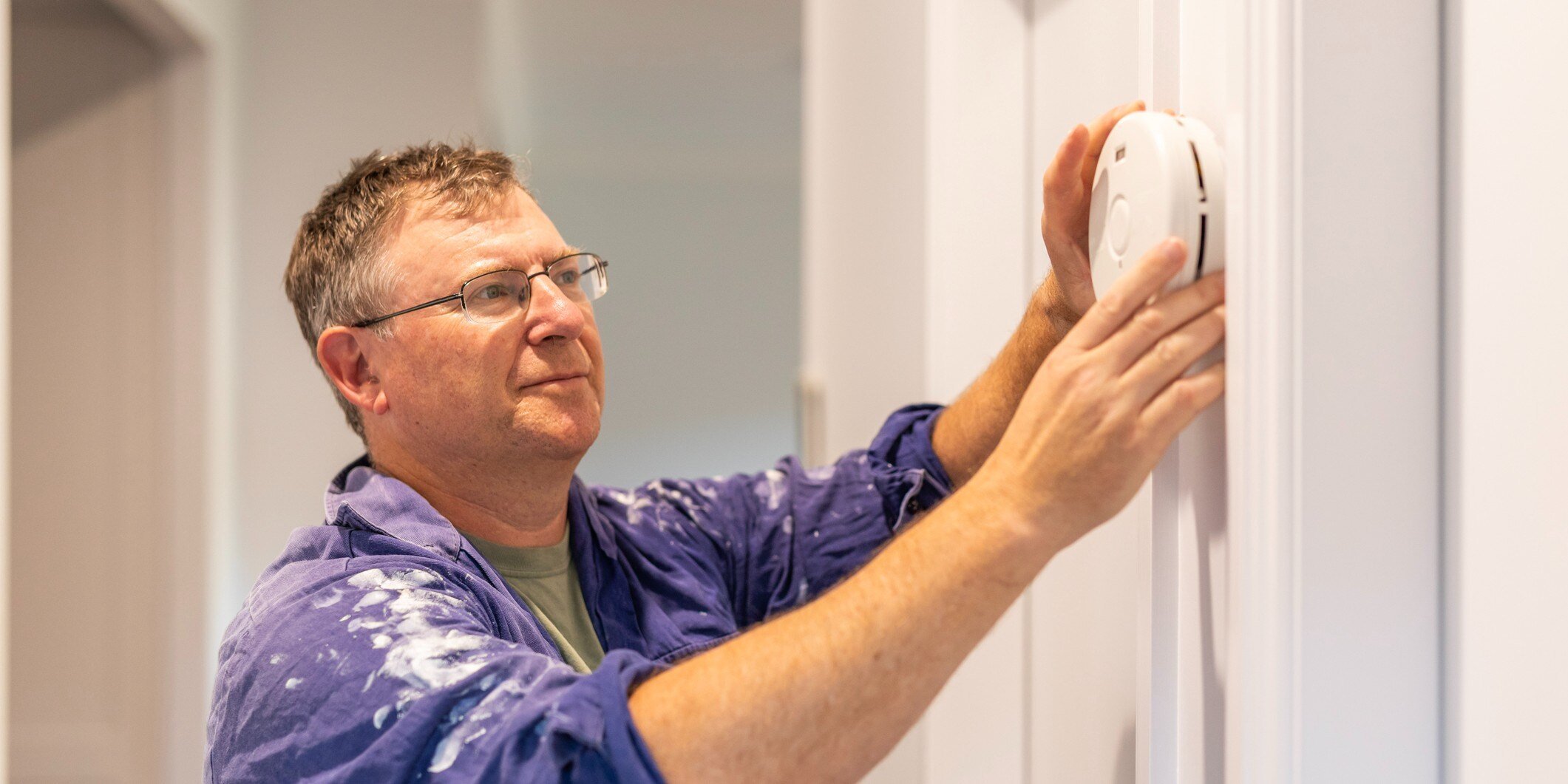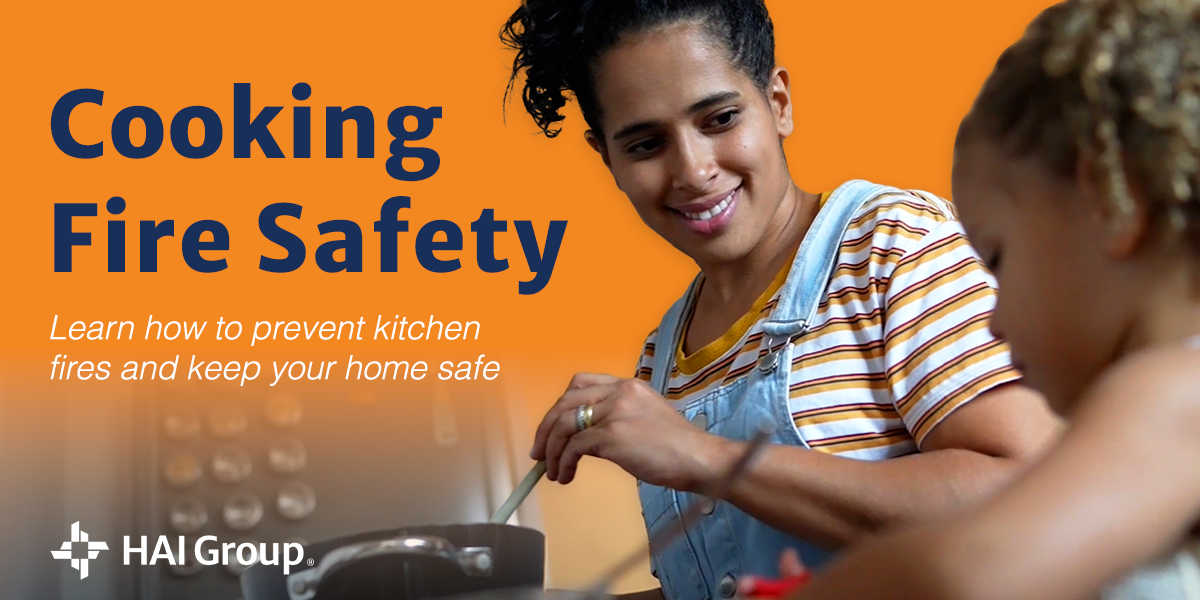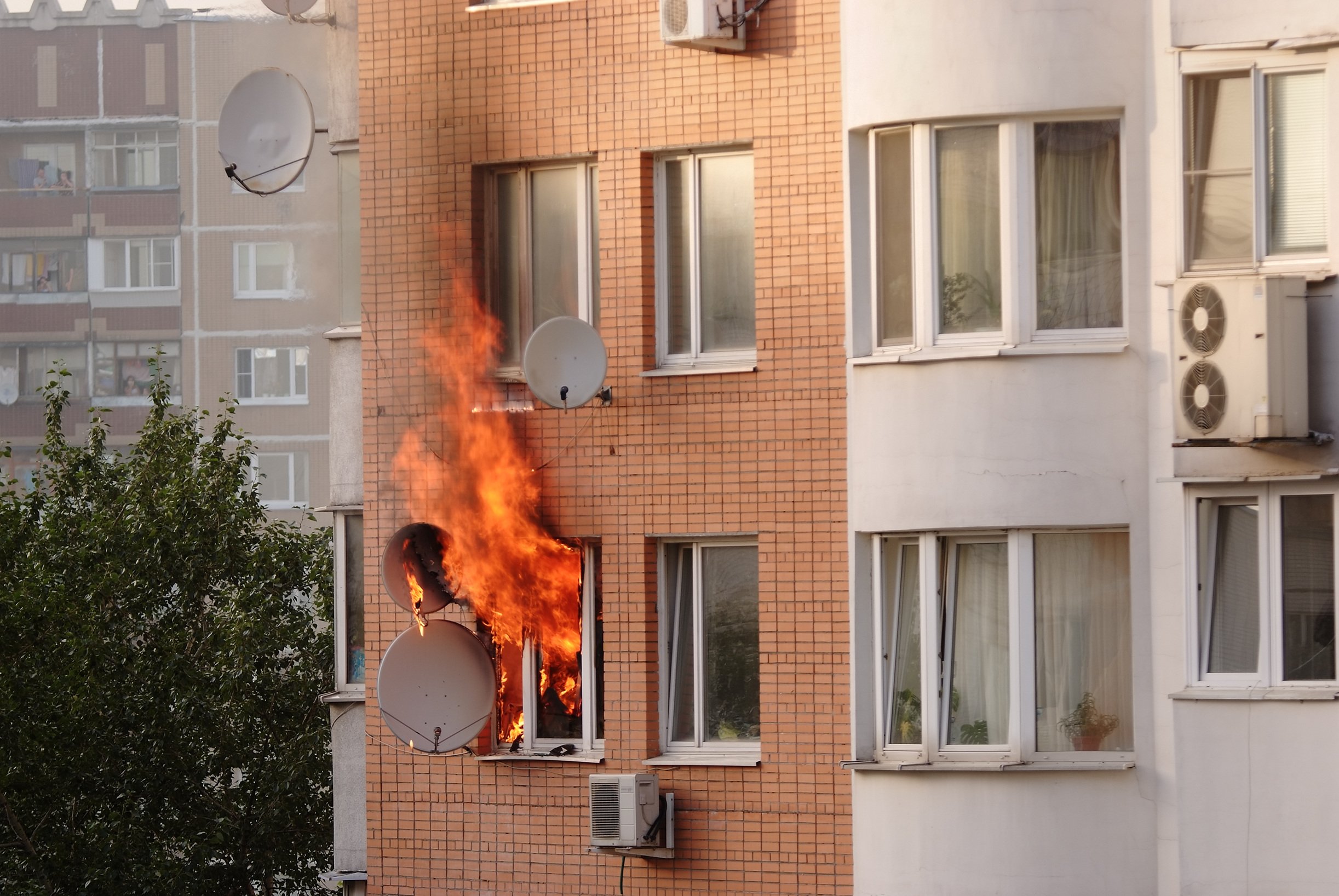Fire safety is a collective effort between property management, maintenance staff, and residents. Share these key multifamily fire safety tips with staff and residents to help prevent dangerous and destructive fires.
Stay in the kitchen while cooking
Cooking remains the leading cause of home fires in the U.S., according to the latest report from the National Fire Protection Association (NFPA) covering 2017-2021. During this period, cooking fires were responsible for 44 percent of all reported residential fires. Here are some key takeaways from the report:
- Cooking fires caused an estimated $1.15 billion in direct property damage annually.
- Cooking was the second leading cause of home fire deaths.
- Unattended cooking was the primary factor in both cooking fires and related casualties.
- 66 percent of home cooking fires started when cooking materials such as food, fat, and grease ignited.
- Cooking fires were twice as likely to occur in apartments as in one- and two-family homes.
- Cooking fires peaked between 5-8 p.m. when many were preparing dinner.
- Although only 17 percent of cooking fires occurred between 11 p.m. and 7 a.m., these late-night fires accounted for 19 percent of deaths, often involving sleep, alcohol, or drug impairment.
“Residents should always watch what they’re cooking,” said Nicklaus Mayo, HAI Group senior risk control consultant,
Whether frying, grilling, or broiling, residents should stay in the kitchen until they’re finished. If they need to leave, the best advice to give residents is to turn off the stove.
Housing organizations should consider installing canister devices—such as those from Auto-Out Cooktop Fire Protection— designed to extinguish unattended cooking fires before they spread from the stovetop, Mayo said. If you’re an HAI Group member, Auto-Out canisters are available at a special discounted price.
Kelli Esposito, a certified apartment supplier at Auto-Out, said the canisters attach with a magnet to the underside of a vent hood.
“The canisters are flame activated as opposed to human intervention, which is important because most grease fires start when someone has walked away from the cooktop,” Esposito said.
The primary fire-suppression agent in Auto-Out canisters is baking soda, which releases carbon dioxide, removing the oxygen flames feed on.
“The worst thing you can do is pour water on a grease fire,” Esposito said. “Since oil and water do not mix, pouring water can cause the oil to splash and spread the fire even worse.”
Eligible HAI Group members who install automatic stovetop fire suppression devices can submit for project reimbursement through our Loss Prevention Fund.
Inspect fire protection equipment
Every time someone from your property management or maintenance team steps into a unit—whether for an annual inspection or to fix a leaky faucet—they should check that all smoke and carbon monoxide detectors work, Mayo said. Staff should also check fire suppression sprinklers to ensure they haven’t been tampered with.
“That’s a mandatory part of staff stepping into a unit,” he said. “Besides formal inspections once a year, you’re not in there the other 364 days, so as many touchpoints as you get, you have to make sure that these fire protection components are working.”
During unit visits, staff should always check the date smoke and fire detectors were installed to ensure they aren't expired. If the detectors aren't hard-wired, staff should test and change batteries as necessary.
Urge residents to notify property management immediately if they believe any of their smoke, heat, or carbon monoxide detectors are malfunctioning. Mayo said staff should carefully document each inspection and any actions taken.
Carbon monoxide and smoke detector requirements
-
The U.S. Department of Housing and Urban Development (HUD) has started enforcing a 2020 law requiring carbon monoxide detectors in most federally assisted housing units. Here's an overview of the requirements.
-
In 2022, Congress passed the “Public and Federally Assisted Housing Fire Safety Act of 2022,” introducing new smoke alarm requirements for federally assisted housing. These guidelines, aligned with National Fire Protection Association (NFPA) Standard 72, aim to enhance fire protection and ensure resident safety. All federally assisted housing properties must comply with these new guidelines by December 29, 2024, the law's effective date. Here’s an overview of the key changes and what they mean for property managers and residents.
Keep flammable materials away from space heaters and candles
If your housing organization allows space heaters in units, consider creating a safety policy all residents must acknowledge as part of their lease agreement. Here are some critical safety tips to pass along to residents:
- Keep space heaters at least three feet away from anything that can burn.
- Keep kids and pets away from space heaters.
- Always turn space heaters off when leaving the room or going to bed.
Mayo said that candles are a leading cause of fire during the winter months, especially around the holidays. Residents should be advised to keep candles at least a foot away from anything that can burn. They should also blow out candles when leaving the room or going to sleep. Matches and lighters should be stored up high or in a cabinet with a child lock.
Share fire escape plans
Make sure primary and secondary fire escape plans are easily accessible to residents and posted throughout the property according to local and state fire codes. Residents should also know where the closest fire extinguisher and fire alarm pull station are located.
Review fire escape plans during annual unit inspections. Urge residents to discuss fire safety and emergency exit strategies with their children, grandchildren, and visitors.
Install and inspect self-closing doors
During a fire emergency, residents should prioritize a quick and safe exit—shutting their unit doors might not come to mind. Self-closing doors can provide peace of mind and help prevent fires from spreading beyond a unit or passageway.
These doors are often required in new construction. If you manage older properties where these doors aren’t required by code, consider investing in them anyway. Staff should check that self-closing doors are working correctly during annual unit inspections and maintenance visits.
Bottom Line: Do’s and don’ts for fire safety
Before you go, check out our resident "do's and don'ts" for fire safety in multifamily properties. If you have any questions or need help, contact our Risk Control and Consulting Team.
- DO remain in the kitchen while cooking.
- DO keep a 3-foot radius around the stove clear of any combustible materials.
- DO follow all smoke-free guidelines and recommendations.
- DO know where the closest fire extinguisher and fire alarm pull station is located.
- DO notify property management immediately if you believe any of your smoke, heat, or carbon monoxide detectors are malfunctioning.
- DO have a conversation about fire safety and emergency exit strategy with your children, grandchildren, and visitors.
- DON’T tamper with or alter fire protection equipment (e.g., smoke and carbon monoxide detectors, sprinkler heads, etc.).
- DON’T cook in the kitchen when tired, drowsy, or under the influence of drugs or alcohol.
- DON’T remove covers from standpipe system risers or fire department connections.
- DON’T hang anything on a sprinkler pipe, sprinkler head, or water supply line.
- DON’T overload an electrical circuit with additional appliances.
- DON’T use an extension cord as a permanent means of electricity for an appliance or fixture.
- DON’T allow a fire extinguisher to be discharged unless there is a fire emergency.
This article is for general information only. HAI Group makes no representation or warranty about the accuracy or applicability of this information for any particular use or circumstance. Your use of this information is at your own discretion and risk. HAI Group and any author or contributor identified herein assume no responsibility for your use of this information. You should consult with your attorney or subject matter advisor before adopting any risk management strategy or policy.

.png)




